Sporangiophore development and Equisetum strobilus: how fossils and reproductive morphologies illuminate horsetail origins and homology
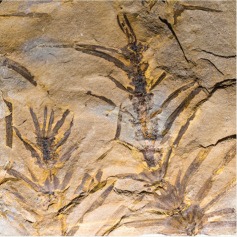
Annals of Botany 119: pp. 489–505, 2017 doi: 10.1093/aob/mcw273
Equisetum is the sole living representative of a family (Equisetaceae) with a rich fossil record. Widespread extinction in the group and the prevailing view of the horsetail shoot as patterned by node-internode alternation have fuelled a century of debates concerning the origin of the Equisetum strobilus. Tomescu et al. adopt a perspective of the shoot as a succession of phytomers, integrating development and comparative morphology of fossil equisetaleans to show that reproductive structures arise from phytomer development rather than directly from apical growth. As well as bringing to light the homology of the Equisetum strobilus, this model implies that sporangiophore development is independent of node-internode identity, representing the expression of an ancestral euphyllophyte developmental module that pre-dates the evolution of leaves.
Authors: A. M. F. Tomescu, I. H. Escapa, G. W. Rothwell, A. Elgorriaga and N. R. Cúneo
A new addition to the Patagonian Ceratopetalum (Cunoniaceae) five-winged fossil fruit family
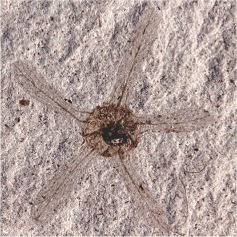
Annals of Botany 119: pp. 507–516, 2017 doi: 10.1093/aob/mcw283
Museomic approaches are employed in order to establish an evolutionary, palaeoecological, and biogeographic context for radially symmetrical, five-winged fossil fruits from the highly diverse early Eocene Laguna del Hunco flora of Chubut Province. Gandolfo and Hermsen draw comparisons with other fossil and modern fruits and describe the new species Ceratopetalum edgardo-romeroi (Cunoniaceae). In addition to sharing several characteristics, such as symmetry, number of fruit wings and presence of a conspicuous floral nectary, which unequivocally place this new fossil species within the genus Ceratopetalum, the venation pattern of the minor fruit wings (sepals) is unique within the genus and diagnostically heralds the new species. C. edgardo-romeroi is the oldest known and only record of Ceratopetalum outside Australasia, and the discovery of this species further documents the biogeographic connection between Patagonia and Australasia.
Authors: M. A. Gandolfo and E. J. Hermsen
Predicting photosynthetic productivity of intercropping systems with image-based reconstruction
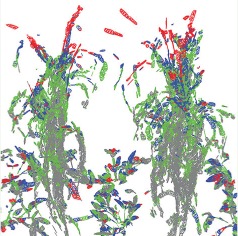
Annals of Botany 119: pp. 517–532, 2017 doi: 10.1093/aob/mcw242
Intercropping systems contain two or more species simultaneously in close proximity. Due to contrasting features of the component crops, quantification of the light environment and photosynthetic productivity remains challenging to achieve, however it is an essential component of productivity. Burgess et al. combine three-dimensional reconstruction with ray tracing to provide a novel, accurate method of exploring the light environment within an intercrop that does not require difficult measurements of light interception and data-intensive manual reconstruction. The presented method provides new opportunities for calculating potential productivity, enables the quantification of dynamic physiological characteristics of crops, and the prediction of new productive combinations of previously untested crops.
Authors: A. J. Burgess, R. Retkute, M. P. Pound, S. Mayes and E. H. Murchie
Unveiling the osmophores of Philodendron (Araceae)

Annals of Botany 119: pp. 533–543, 2017 doi: 10.1093/aob/mcw236
Philodendron, a species-rich genus of the arum family (Araceae), is thermogenic and produces strong inflorescence scents for pollinator attraction. However, the precise location of the scent-emitting tissue and its ultrastructure were hitherto unknown. Gonçalves-Souza et al. show that the distal portion of both fertile and sterile staminate flowers function as osmophores in Philodendron adamantinum. The papillose epidermal cells of the distal portion of fertile stamens and staminodes are characterised by dense cytoplasm and large nuclei; the composition of organelles here is compatible with secretory activity, as indicated by the great number of mitochondria and plastids. In this portion, lipid droplets were observed, that were consumed concomitantly with the release of odour. These results indicate a functional link between thermogenesis and volatilisation of osmophore secretions to produce olfactory signals for attracting specialised beetle pollinators.
Authors: P. Gonçalves-Souza, C. Schlindwein, S. Dötterl and E. A. Sousa Paiva
Functional genomics and hybrid allopolyploid speciation in grass monocots
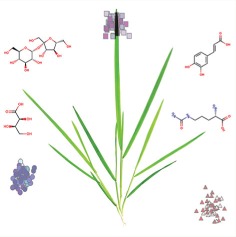
Annals of Botany 119: pp. 545–561, 2017 doi: 10.1093/aob/mcw239
Morphological traits and metabolics reveal inter- and intra-species diversity within the model annual grasses Brachypodium distachyon, B. stacei and B. hybridum. López-Alvarez et al. investigate inter- and intraspecific phenotypic and metabolomic variation of this group of grasses. Eight phenotypic characters and 434 tentatively annotated m/z signals significantly discriminated the three species. Intraspecific phenotypic variation was found within B. distachyon and B. stacei, whereas populations of B. hybridum were considerably less differentiated. Pollen grain length and lemma length were significantly associated with 10 and 6 metabolomic traits, respectively. These results could guide the selection of new germplasm lines of the three model grasses in on-going GWAS experiments.
Authors: D. López-Alvarez, H. Zubair, M. Beckmann, J. Draper and P. Catalán
Wood anatomical diversity results from force of habit, and shifts in habitat

Annals of Botany 119: pp. 563–579, 2017 doi: 10.1093/aob/mcw243
Plant functional traits constitute responses to a complex evolutionary reciprocality between plants and the environment. Wood anatomy varies between shrubs and trees, and between wet and dry habitats, but a question remains as to the degree to which growth habit and habitat shape and are in turn shaped by wood structure. Using phylogenetic comparative methods, Arévalo et al. tested for contingent evolution of wood anatomy, habit, and habitat in the mega-diverse angiosperm genus Croton (Euphorbiaceae), which possesses a growth habit manifesting in most species as persistently woody shrubs and small to large trees. Showing that habit and habitat influence wood anatomical evolution and that wood anatomy affects shifts in habit and habitat, the study presents a set of novel functional trait associations for woody plant structure. The only wood anatomical trait correlated with habitat and not habit was the presence of helical thickenings in the vessel elements of mesic Croton.
Authors: R. Arévalo, B. W. van Ee, R. Riina, P. E. Berry and A. C. Wiedenhoeft
Seed dormancy of the first flowering plants
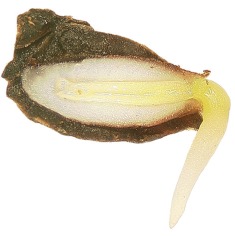
Annals of Botany 119: pp. 581–590, 2017 doi: 10.1093/aob/mcw244
Dormancy mechanisms act to optimise the timing of seed germination for many seed plants. Fogliani et al. demonstrate that the New-Caledonian shrub Amborella trichopoda exhibits a type of morphophysiological dormancy in which the mechanical resistance of surrounding fruit tissues plays a key role in the initial physiological phase. Phylogenetic reconstructions, including data from A. trichopoda, suggest that seed germination in early flowering plants was controlled through a morphophysiological mechanism, thus contributing to an eco-physiological description of the common ancestor of the >300, 000 species of flowering plants alive today.
Authors: B. Fogliani, G. Gâteblé, M. Villegente, I. Fabre, N. Klein, N. Anger, C. C. Baskin and C. P. Scutt
Genetic sex determination and sexual instability in Amborella trichopoda
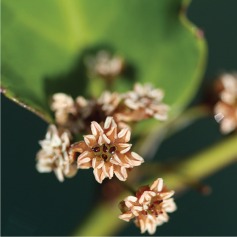
Annals of Botany 119: pp. 591–597, 2017 doi: 10.1093/aob/mcw278
Amborella trichopoda, the sister species of all other extant angiosperms, is typically dioecious, producing male and female flowers on separate individuals. Anger et al. map sex phenotypes onto a phylogeny of basally diverging angiosperms using maximum parsimony. Sex-ratios and phenotypes were studied in parallel over two consecutive flowering seasons for an ex situ population of A. trichopoda. The sex-ratio of an in situ population was also assessed. The results show that the primary male-female ratio in A. trichopoda is 1:1, suggesting a genetic mechanism of sex determination, however, male-biased sex ratios were evident in natural populations. Rare sex-change events were observed in A. trichopoda, with bisexual flowers manifesting on otherwise male plants. The authors propose a method to date the origin of dioecy in A. trichopoda and deduce that sexual instability in A. trichopoda suggests the evolution of dioecy via a gynodioecious intermediate.
Authors: N. Anger, B. Fogliani, C. P. Scutt and G. Gâteblé
Berberidopsis beckleri, floral development and evolution of the core eudicots
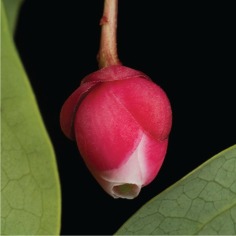
Annals of Botany 119: pp. 599–610, 2017 doi: 10.1093/aob/mcw241
The floral development of Berberidopsis beckleri is compared with its sister species B. corallina to clarify the origins of the pentamerous pentacyclic flower of the core eudicots. Both species are unusual amongst core eudicots in having flowers arranged on short axillary shoots with spiral phyllotaxis and an undifferentiated perianth. Ronse de Craene suggests that floral evolution in core eudicots proceeded with a progressive reduction of perianth parts linked with a transition to a whorled phyllotaxis. B. beckleri and B. corallina represent prototypes of a gradient shift towards more regular core eudicot flowers with a combination of ancestral and highly specialised features.
Author: L. P. Ronse De Craene
Diversification of an underutilised crop genus in Borneo
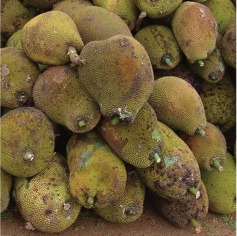
Annals of Botany 119: pp. 611–627, 2017 doi: 10.1093/aob/mcw249
Recent work points to Borneo as an evolutionary and biodiversity hotspot. The genus Artocarpus (Moraceae) has many Borneo endemics, and more than a dozen underutilised crops, including breadfruit. Williams et al. reconstruct the evolutionary history of Artocarpus. They find that Borneo represents the ancestral range for the genus and likely served as a centre of diversification (especially during the Miocene), from which Artocarpus species dispersed to and diversified in other regions of South and Southeast Asia. The phylogeny presented may be useful in identifying the crop’s wild relatives, and highlights the need for conservation of areas with high species diversification and endemism.
Authors: E. W. Williams, E. M. Gardner, R. Harris III, A. Chaveerach, J. T. Pereira and N. J. C. Zerega
Suberised barriers support composite water and solute transport in barley roots
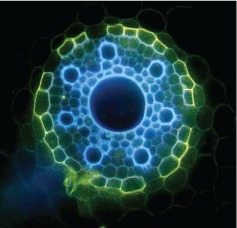
Annals of Botany 119: pp. 629–643, 2017 doi: 10.1093/aob/mcw252
Roots possess complex anatomical structures characterised by suberised apoplastic barriers that are deposited in localised cell wall layers. Barley roots lack an exodermis, but form an endodermis that accounts for the majority of the roots’ total suberin content. Ranathunge et al. show that the basal zone with greater suberin is shown to have lower water permeability than the apical zone in Hordeum vulgare. A comparison of root and cell water permeabilities suggests a primary cell-to-cell water and nutrient transport system in barley roots in addition to flow via apoplastic pathways. Roots exhibited different permeabilities according to the different solutes used.
Authors: K. Ranathunge, Y. X. Kim, F. Wassmann, T. Kreszies, V. Zeisler and L. Schreiber
Origin of distribution and genetic diversity of a savanna species
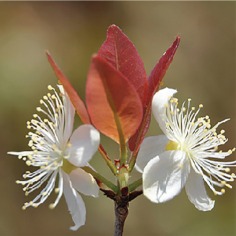
Annals of Botany 119: pp. 645–657, 2017 doi: 10.1093/aob/mcw257
Historical glaciation cycles shape species distribution and population differentiation worldwide. Combining ecological niche modelling and phylogeographical analysis, this study by Lima et al. suggests that the distribution of Eugenia dysenterica (Myrtaceae) radiated outwards from the central region of the Cerrado biome, and that its genetic diversity pattern is due to climatic oscillations that occurred during the Quaternary. These findings are important for understanding the historical processes that leads to the current distribution of species.
Authors: J. S. Lima, M. P. C. Telles, L. J. Chaves , M. S. Lima-Ribeiro and R. G. Collevatti
Disturbance by a native fossorial rodent favours plant invasion in arid shrubland
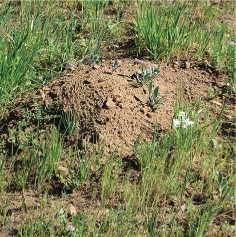
Annals of Botany 119: pp. 659–670, 2017 doi: 10.1093/aob/mcw258
Disturbance events, such as cattle grazing or human activities, remove plant individuals and thereby create opportunities for non-native plants to colonise the community. Disturbance often favours exotic plant species, but little is known about the implications for community structure. In an arid shrubland characterised by mounds generated by a native fossorial rodent, Escobedo et al. evaluate the influence of such natural disturbance on plant invasion, as well as on the taxonomic, functional and phylogenetic structure of the community. Disturbance favoured exotic species with short life-cycles and thus modifies community composition and functional trait structure. Disturbance increased trait convergence, which resulted in phylogenetic clustering because related species showed similar trait values.
Authors: V. M. Escobedo, R. S. Rios, C. Salgado-Luarte, G. C. Stotz and E. Gianoli
Pollen-mediated gene flow in wild olive
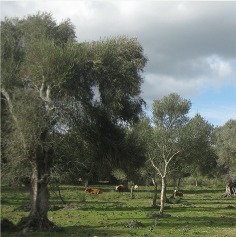
Annals of Botany 119: pp. 671–679, 2017 doi: 10.1093/aob/mcw246
Wild olive (Olea europaea subsp. europaea var. sylvestris, aka oleaster) populations are subject to increasing fragmentation and size reduction. Beghè et al. employ microsatellite markers and apply paternity analysis to investigate pollen flow patterns and fine-scale spatial genetic structure for oleaster populations in regions of undisturbed forest in Southern Spain, a hotspot of wild olive genetic diversity. The heterogeneous spatial genetic structure and relatively high pollen immigration uncovered by this study could contribute to the development of conservation stategies for the preservation of this forest genetic resource.
Authors: D. Beghè, A. Piotti, Z. Satovic, R. de la Rosa and A. Belaj


